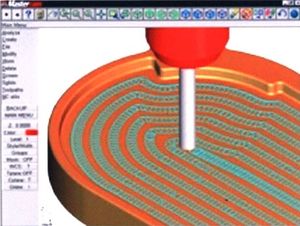CAM Software
CAM Software or computer-aided manufacturing software is the use of computer software to control machine tools and related machinery in the manufacturing of workpieces. This is not the only definition for CAM, but it is the most common; CAM may also refer to the use of a computer to assist in all operations of a manufacturing plant, including planning, management, transportation and storage. Its primary purpose is to create a faster production process and components and tooling with more precise dimensions and material consistency, which in some cases, uses only the required amount of raw material , while simultaneously reducing energy consumption. CAM is now a system used in schools and lower educational purpoeses CAM is a subsequent computer-aided process after computer-aided design (CAD) and sometimes computer-aided engineering (CAE), as the model generated in CAD and verified in CAE can be input into CAM Software, which then controls the machine tool.
Traditionally, CAM has been considered as a numerical control (NC) programming tool, wherein two-dimensional (2-D) or three-dimensional (3-D) models of components generated in CAD software are used to generate G-code to drive computer numerically controlled (CNC) machine tools. Simple designs such as bolt circles or basic contours do not necessitate importing a CAD file. As with other Computer-Aided technologies, CAM does not eliminate the need for skilled professionals such as manufacturing engineers, NC programmers, or machinists. CAM, in fact, leverages both the value of the most skilled manufacturing professionals through advanced productivity tools, while building the skills of new professionals through visualization, simulation and optimization tools.
